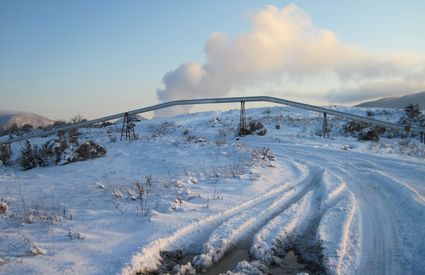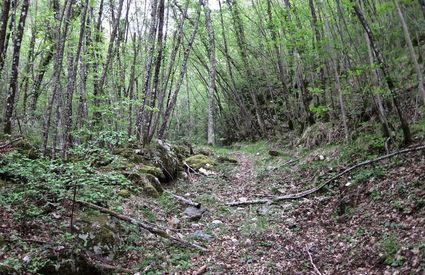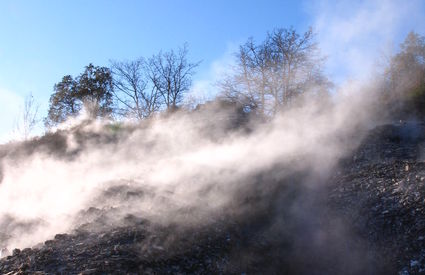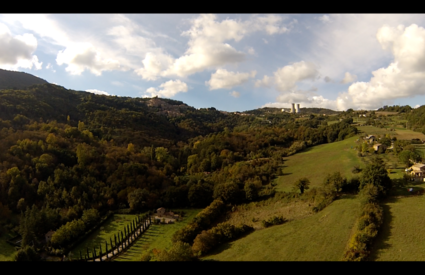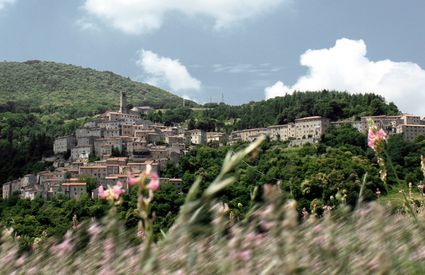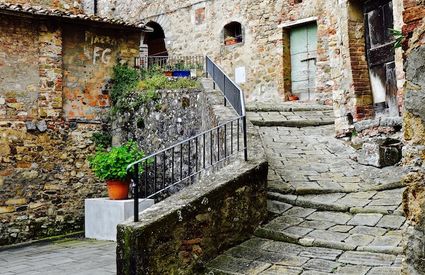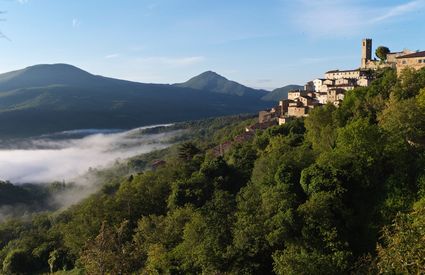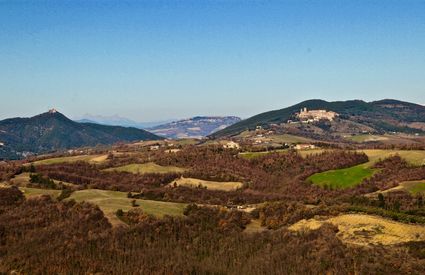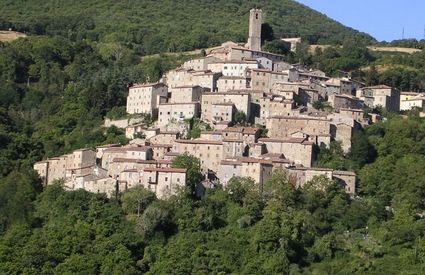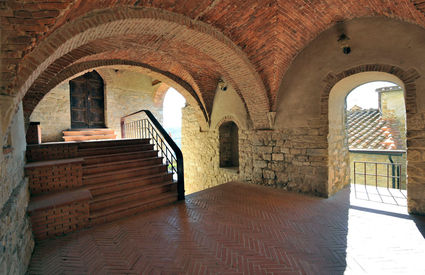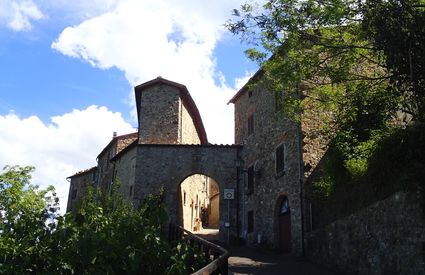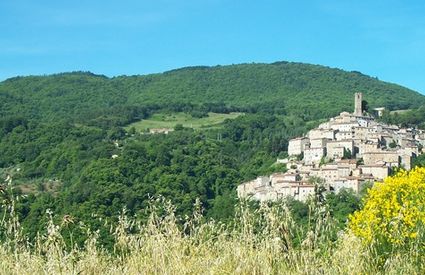Castelnuovo di Val di Cecina
A village in the clouds
...Just stone, wind and sky
A village in the clouds
...Just stone, wind and sky
Getting lost
A land at times harsh and wild, but ever new with every hairpin bend, and which changes with the seasons. A few villages perched on hilltops, remote old churches, clear streams, abandoned castles and farms, flocks of sheep in the pasture. Almost touching the mists of time, the scenery never seems to change, as if we were back in the Middle Ages: to the extent that the daring forms and snaking tubes that carry geothermal fluid to the power stations make reference to neither the present nor the future. This is the land in which we wish to “lose ourselves”, forsaking the usual tourist tracks and let ourselves be led by chance, by instinct, by poetry . No risk is attached to this, for in Tuscany all roads, however arduous they may seem, lead to something, oftentimes to a pleasing and unexpected discovery.
Carlo knows all about this. His family has lived in Castelnuovo since when Ferdinando III was Grand Duke of Tuscany and he knows – and loves – this land in its every cleft.
Finding yourself: just stone, wind and sky
From wherever you arrive, the views range over mountains that surround the village, breath-taking vistas over the Pavone Valley. Oftentimes the road winds precariously amid vast oak forests and chestnut groves that surround the evocative medieval village centre of Castelnuovo di Val di Cecina, known as “Castri Novi de Montanea” in the Middle Ages. Back then the chestnut and its fruits, nicknamed the “bread of the poor” provided work and food to all those who had built a large part of their culture around this tree. The chestnut fascinates at any time of the year: purplish and skeleton-like in the winter, if not embraced by the gelid snow; flame-like in the golden hues of the autumn; and then clad in green on the mountain slopes, winking at trails and springs, and offering cool comfort in the summer.
There’s the village with the layout of a medieval town, erected on a sandstone spur. The village, with its silent, bare alleys and tiny piazzas and clearings, where you are obliged to walk, requires you to stay for a while. There are no important monuments, nor are there any museums, inns or restaurants. Just stone, sky and wind.
Stop and listen
A few old ladies will tell you their tales, the smell of sauce coming from a window ajar and a scanty cat will cross the street in its furtive way. You might hear a few different languages: Arabic, Albanian, Romanian, English, German, Dutch and Macedonian… Don’t be surprised. They are the new population of a land marked by migration that looks to the future and would love to shape it in their own way.
Stop. I, who was born here and who has always lived here, harbour both love and hate for this, feelings that you could imagine by thinking of poet Leopardi’s “native wild village” and the Spoon River cemetery.
Our village is in the hills too, with stones of their ancient dead, perhaps more stories of the past than those of the living.

